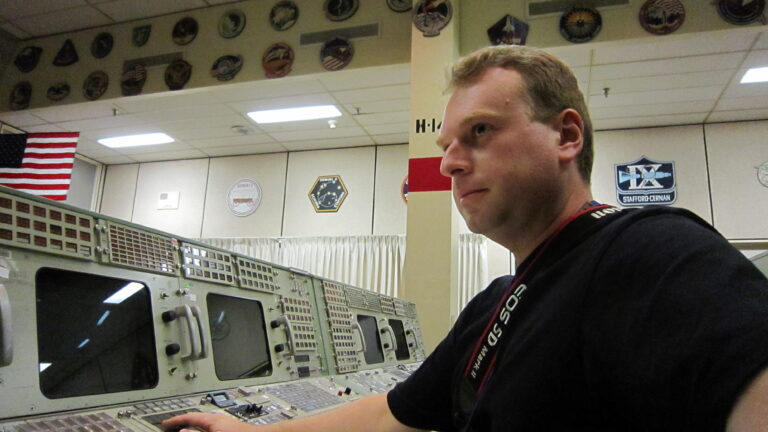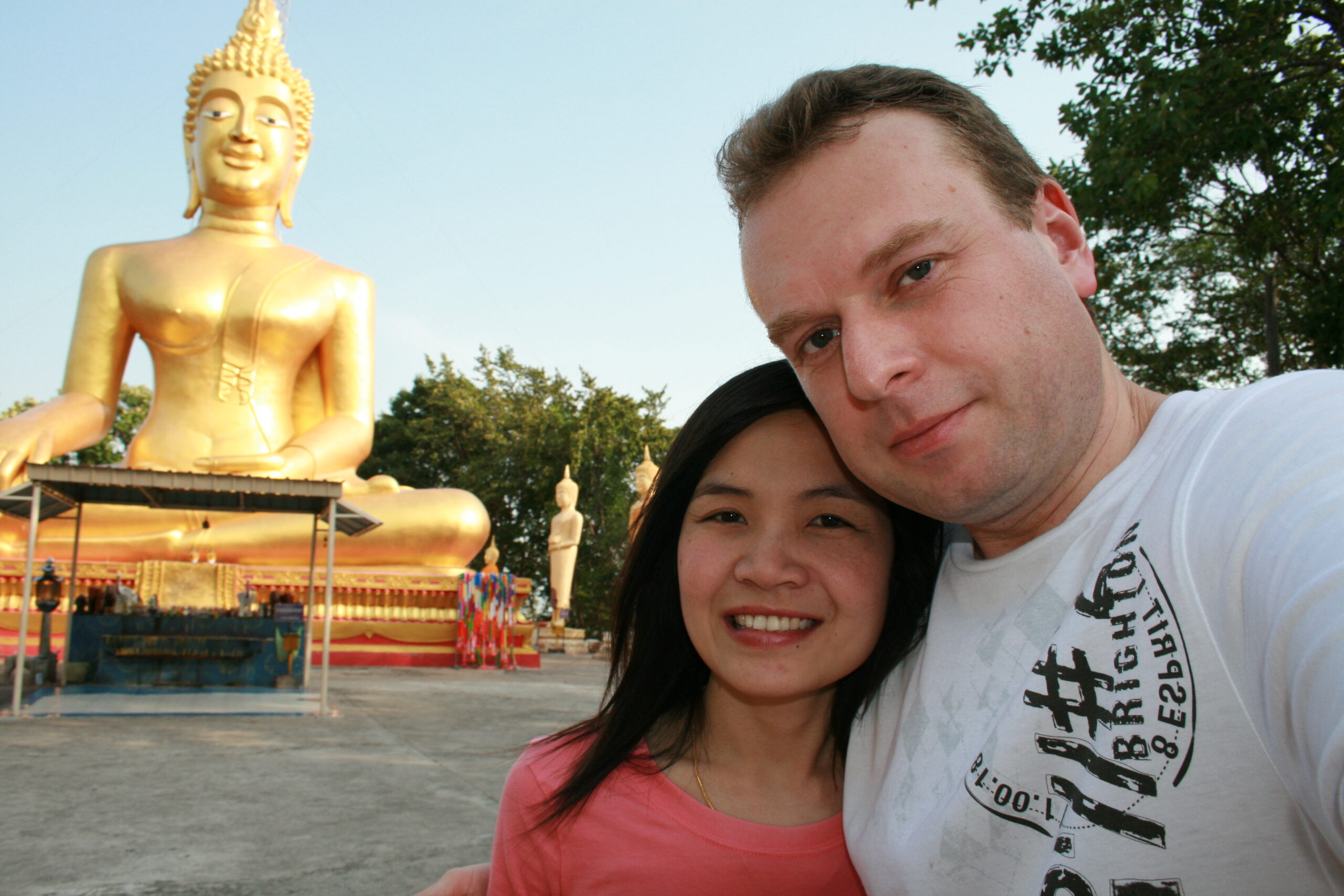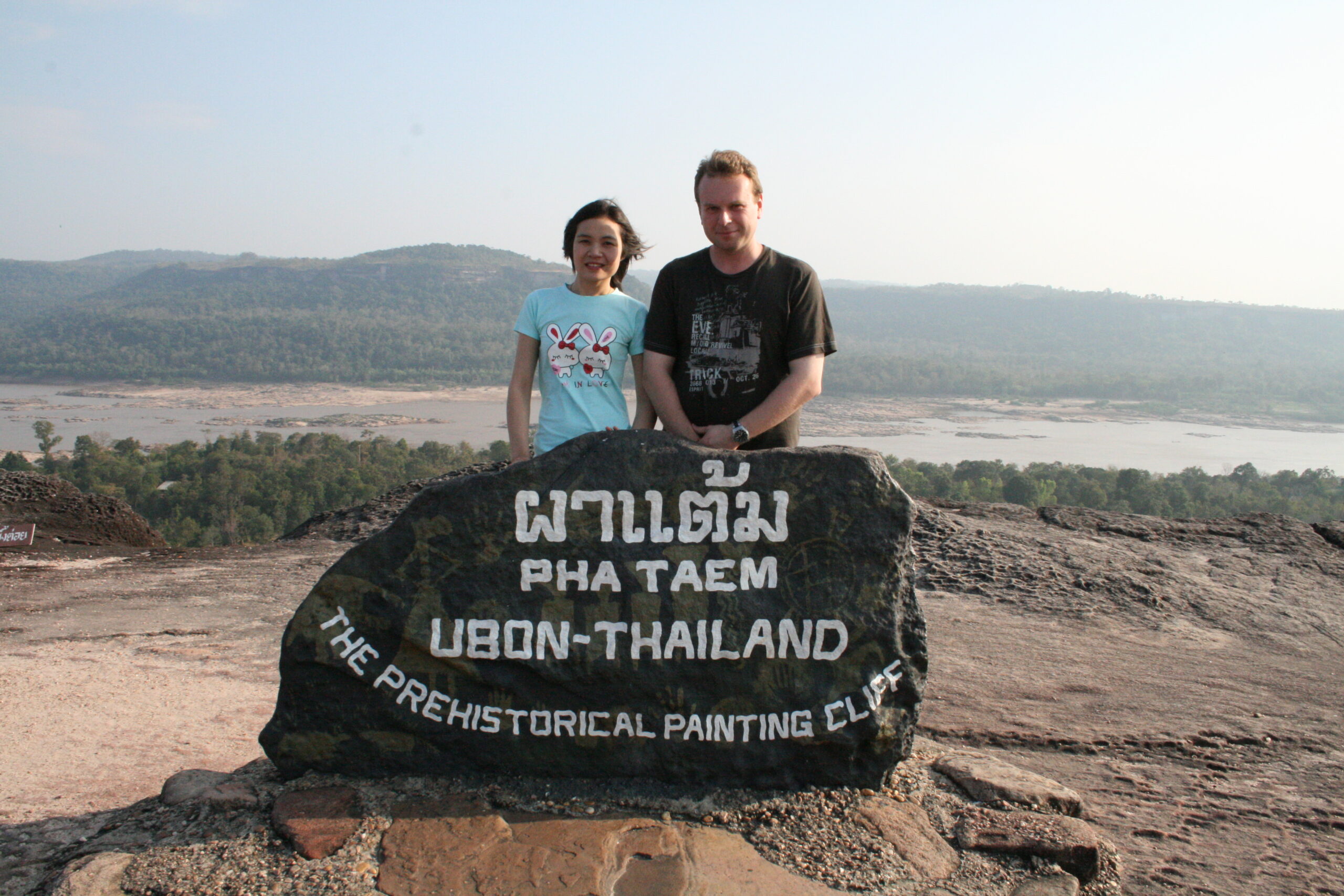Table of Contents
Toggle🚀 Start of VIP Tour
As soon as I clipped on my shiny VIP badge, I knew this was going to be something special. Space Center Houston wasn’t just another tourist stop — this was the real deal. I was about to step into the heart of NASA’s mission control and training facilities. The Level 9 Tour? That’s the one they reserve for people who want to see what really goes on behind the scenes. Not just rockets and souvenirs — this was access to the nerve center of space dreams.
One of the first things I got to do was sit at actual simulation consoles — the kind astronauts use to train. It was wild seeing all those buttons and glowing panels, and I couldn’t resist imagining I was launching a shuttle. Everything felt authentic, from the faint hum of machinery to the way the guides spoke about it like it was just another Tuesday at work. It wasn’t all polished or touristy — it was raw, real, and technical in the best way possible.
There were these hilarious funhouse-style “space portals” labeled Mars and Neptune, with mirrors that made you tall and skinny or short and wide. I had way too much fun stepping through those and snapping photos of my distorted reflection. It was a light-hearted break between the heavier space tech. You don’t usually think of astronauts and carnival mirrors together, but somehow it worked.
And yes, there was space food. Not the freeze-dried kind you get in gift shops, but actual trays of what the astronauts eat during training. I got to sample one and, let me tell you, space cheeseburgers hit different. It’s cafeteria-style, but there’s something surreal about eating lunch under a model of a space shuttle with a bunch of engineers and VIP visitors walking around. I may or may not have taken two desserts.
The whole place had that unmistakable American optimism you see in sci-fi movies. Flags, models of spacecraft, and clean, bright lobbies that somehow made me feel like I was in the future and the past at the same time. I even got to see the little white NASA van that picks up VIPs. Everyone wanted a photo in front of it — of course, I got mine too.
Honestly, it was more than a tour. It felt like a peek into something sacred. These halls have seen moon landings, disasters, triumphs — all of it. Walking through them, badge swinging on my chest, I felt like I got to share in a tiny bit of that legacy. And for a space nerd like me? That was everything.
🌕 First Stop - Altair Lunar Lander Facility
As we stepped inside the Altair Lunar Lander Facility, it hit me just how massive everything was. The room was cavernous, with high ceilings and giant mock-ups of lunar modules, stages, and inflatable habitats scattered around like oversized Lego pieces. It felt like stepping onto a movie set, except this was the real thing — the prototypes and testbeds for the next chapter of space exploration.
One of the first things I noticed was the life-sized model of the Altair descent stage. There were engineers in lab coats walking around like it was just another day at the office, but I was completely geeking out. Every station had its own set of diagrams, models, and mission posters. There were even inflatable modules designed to mimic what a moon base might look like one day — like space camping, but way more high-tech.
I wandered through displays full of mission plans, cross-sections of lander designs, and future habitat schematics. The mock-up interiors gave a real sense of how cramped (and clever) life on the Moon might be. Everything had to be multi-use, foldable, compact, and ridiculously efficient. I couldn’t stop imagining astronauts living in those pods, surrounded by dust and stars.
The control rooms and workstations nearby had that organized chaos vibe — desks full of blueprints, 3D models, and what looked like a dozen variations of duct tape and space tools. There were huge screens, video feeds, and renderings of landers surrounded by astronauts in digital moonscapes. It felt like the nerve center of possibility.
We moved between testing rigs and descent stage frames, with yellow safety lines guiding our way. There was even a model of an astronaut next to one of the prototypes to give us a sense of scale. Spoiler: those things are huge. Every turn offered something new — from structural rings ready for pressurization tests to full-on diagrams showing the layout of life-support systems.
By the end of the stop, I had a whole new respect for the people building the future of moon missions. Seeing it all in person — the real nuts-and-bolts side of space travel — made it feel closer than ever. Not something out of sci-fi anymore, but something actually being built, piece by piece, right in front of us.
🌊 Second Stop - Underwater Training Facility
I’ve seen some impressive training setups before, but nothing prepares you for the sheer scale of the Neutral Buoyancy Lab. From the outside, it doesn’t look like much — just another big NASA building — but inside? Inside is basically a massive indoor ocean designed to mimic space. The pool stretches out like a miniature sea, and the water is this gorgeous, shimmering blue that somehow makes it feel both peaceful and futuristic.
We walked through a maze of hallways and control rooms before finally getting our first full view of the tank — and wow. It’s 202 feet long, 102 feet wide, and over 40 feet deep. That’s more than 6 million gallons of water. Floating inside were full-scale mockups of parts of the International Space Station, with astronauts and divers moving slowly through the water like underwater ballet. Watching it all from the observation windows felt a little surreal, like peeking in on another world.
There were live feeds on monitors showing every angle, and I could see how intricate the movements were. Every cable, every grip point, every twist and turn had a purpose. The suits they wear simulate the feeling of zero gravity, so every movement they make is exactly how it would go down in space. And they repeat these routines over and over until they can do them flawlessly — underwater, in slow motion, with complete precision.
It wasn’t just about watching though. The whole facility had this feeling of legacy. Photos of astronauts lined the walls, flags from partner nations hung high above, and plaques dedicated to those who trained and inspired others filled the space. I stopped to read a tribute to “Sonny” Carter, the facility’s namesake, and couldn’t help but feel the weight of history.
The trainers and engineers here take this work seriously — and it shows. Whether they were guiding a team on the pool deck or monitoring everything from inside the control room, you could feel the quiet focus. We even got a glimpse of equipment bays, suit storage areas, and the massive cranes used to lower modules into the water. It’s all so technical, but also oddly beautiful in a nerdy, mechanical kind of way.
By the time we left, I wasn’t just impressed — I was inspired. Watching these simulations reminded me that space isn’t just about rockets and glory shots of Earth from orbit. It’s also about hours spent underwater, practicing the tiniest of movements, all to make sure that one day, everything goes right up there, hundreds of miles above us.
✈️ Third Stop - T38 Hangars
Our next stop took us outside, out onto the tarmac under cloudy Texas skies, where rows of sleek white jets sat waiting. These weren’t just any planes — they were NASA’s T-38 Talons. It’s wild to think that these fighter jets, originally built for supersonic military training, are what astronauts use to sharpen their reflexes and keep their flight skills razor-sharp. They looked fast even when standing still.
We walked past the open hangars where a few jets were being serviced — nose cones off, ladders up, technicians buzzing around. The whole area smelled faintly of jet fuel and fresh rain. There was something raw and thrilling about being so close to these machines. No velvet ropes, no glass displays — just real working aircraft and the crew who keeps them flying.
Inside the hangars, it felt like organized chaos. Mechanics moved with purpose, checking instruments, tweaking systems, running through procedures like clockwork. I spotted the iconic NASA logo on the tail fins, and it hit me that these jets have carried some of the most legendary names in space history. Astronauts don’t just train in labs or pools — they take these things up into the sky to keep their edge. It’s a reminder that spaceflight starts way down here, with speed and precision on Earth.
The vibe out here was quieter, more utilitarian, but no less impressive. Every hangar, every jet, every tool on the ground felt like a vital part of the bigger mission. Just standing on that tarmac, watching the jets line up against the hangar walls, I felt like I’d stepped into a page from a NASA training manual. Clean, crisp, and utterly cool.
🌕 Fourth Stop - Apollo MCC
Walking into the Apollo Mission Control Center felt like stepping into a time capsule. From the moment we entered the building, it was clear this place had stories to tell. The walls, the carpet, the old-school signage — it all whispered legacy. This is where the most famous words in space history were received: “The Eagle has landed.” And here I was, climbing the very steps that led to the nerve center of the Apollo program.
The control room itself was smaller than I expected, but packed with the weight of history. Rows of green consoles faced the large projector screens, and it was easy to imagine the tension during those missions — the scribbled notes, the coffee cups, the held breaths. Everything was perfectly preserved, right down to the rotary phones and shelves full of dusty handbooks and technical manuals. I even found a binder marked “Propulsion Console Handbook” from 1968, just casually sitting on a shelf like it hadn’t changed the world.
Screens showed historic mission footage, and I swear I got goosebumps watching the launch clips while sitting in the same room where it all happened. There was a plaque naming this room a National Historic Landmark, and rightly so. This wasn’t a museum. It was the actual place where people calculated trajectories, solved problems in real time, and brought astronauts home.
One of the coolest things? Seeing all the labeled buttons and switches — no touchscreens here. There were rows and rows of push-buttons with labels like “BOOSTER,” “RETRO,” and “FLIGHT DIRECTOR.” I couldn’t help but lean in and imagine which one Gene Kranz might’ve pressed during Apollo 13. There was even a red phone that looked straight out of a spy movie.
The room was surrounded by symbols of pride — American flags, mission patches, even a big screen with data graphs that looked frozen in time. I found myself lingering longer than I expected, just soaking it in. There was this incredible respect in the air. You don’t just look at the equipment here — you feel the pressure, the decisions, and the triumphs that unfolded at these desks.
Before we left, I paused at the “Flight Director” desk and smiled. This place wasn’t just about where we’ve been. It’s a reminder of what happens when people work together for something bigger. The kind of place that makes you stand up a little straighter — and dream a little bigger.
🧊 Fifth Stop - Vacuum Test Facility
Building 32 doesn’t look like much from the outside — just another white industrial box with pipes running along its flanks. But step inside, and you’re suddenly in one of the most extreme environments NASA can create on Earth. This is where they test spacecraft systems against the cold, emptiness, and silence of space. And when they say “vacuum chamber,” they mean giant steel vaults that could swallow a bus and still have room for a satellite.
We were led through a network of industrial catwalks and towering walls lined with pipes and control panels, until we reached the crown jewel: Chamber A. It’s this enormous cylindrical chamber — think massive concrete silo turned sideways — where spacecraft like the James Webb Space Telescope were tested. Seeing the huge doors cracked open felt like staring into a sci-fi portal. You could practically hear the echo of every billion-dollar project that had passed through there.
There were posters and displays showing how heat, pressure, and airflow are manipulated inside to simulate the harsh conditions of space. I even saw some Simpsons-themed safety posters, which added a surprisingly human touch to a place that felt like it belonged in a space thriller. It’s wild to think how something as delicate as a telescope gets shoved into a chamber that looks like it’s made to test tank armor — all in the name of making sure nothing fails out in orbit.
Along the tour, we passed through control rooms and hallways lined with mission badges, staff photos, and warning signs. There’s a quiet intensity here — the kind of place where nobody raises their voice because precision speaks louder. At one point, we were told this facility can bring a spacecraft down to cryogenic temperatures and near-vacuum pressure to see how it holds up. Spoiler: if it doesn’t pass here, it’s not going to survive space.
Honestly, the whole experience gave me a deeper appreciation for the things we never see in headlines. Everyone talks about the launches, the landings, the astronauts floating in microgravity — but this is where the grit happens. This is the grind. Before anything goes up, it goes through here, where every bolt and panel gets pushed to the limit.
🛰️ Sixth Stop - Space Vehicle Mockup Facility
This place was like walking onto a life-sized LEGO set for space geeks. Everywhere I turned, there were full-scale mockups of modules, capsules, lab components, and even a space shuttle nose poking out from the crowd. This wasn’t just some museum — this was where astronauts train, troubleshoot, and rehearse missions before ever leaving Earth.
They call it the Space Vehicle Mockup Facility, or SVMF if you’re fluent in NASA acronyms. From the ground level, it’s a forest of steel, tubes, and panels. But once we got a higher view, I could see how all the pieces snapped together to form a giant, detailed version of the International Space Station. Harmony, Destiny, Unity — all the iconic modules were here, labeled, scaled, and ready to be explored. I half expected someone to float past in zero-G.
The best part? These weren’t shells — they were interactive training environments. Some had open hatches and seats inside, with monitors, switches, and simulated control panels. I could totally imagine an astronaut crawling through one of these, practicing docking maneuvers or learning what to do if something goes haywire. There were training guides, maps, and little workstations tucked between modules, all buzzing with quiet, methodical energy.
Seeing all the international space agency logos plastered along the modules — ESA, JAXA, Roscosmos, and more — reminded me that space is a team sport. Flags from around the world lined the walls, and there was a real sense of global collaboration happening here, not just American pride. You could almost feel the stories these mockups had absorbed — the briefings, the simulations, the nerves before a launch.
I lingered by the shuttle mockup longer than I expected. There’s just something iconic about that black-and-white nose. It was like meeting a celebrity in person. Being that close to a replica that astronauts actually trained in made everything feel more real, more tangible. Not a fantasy, but a job — a serious one, with serious preparation.
This was the part of the tour where the dream really hit home. It wasn’t just about launching rockets or floating in space. It was about the sweat, the practice, the “try it again” moments inside this massive building. A space where mistakes could happen — and get fixed — before they ever happened out there.






